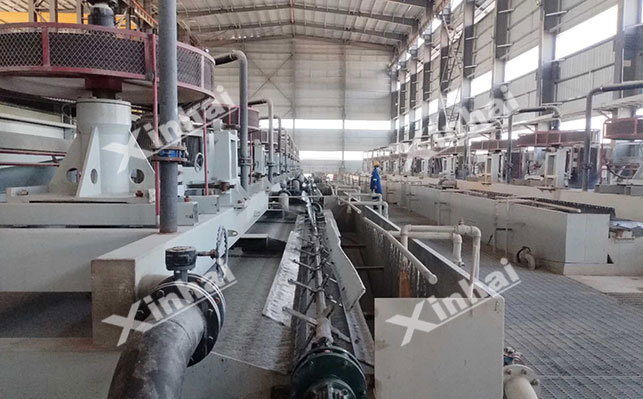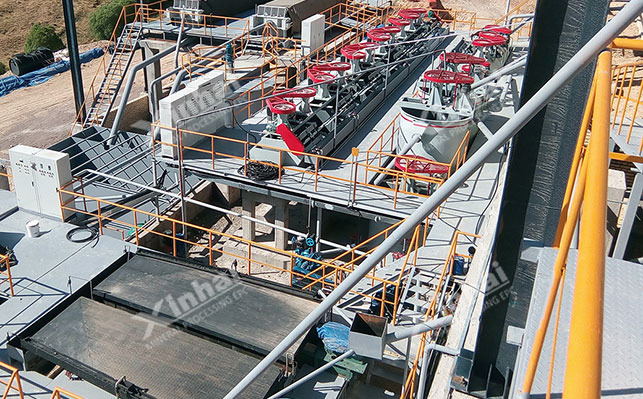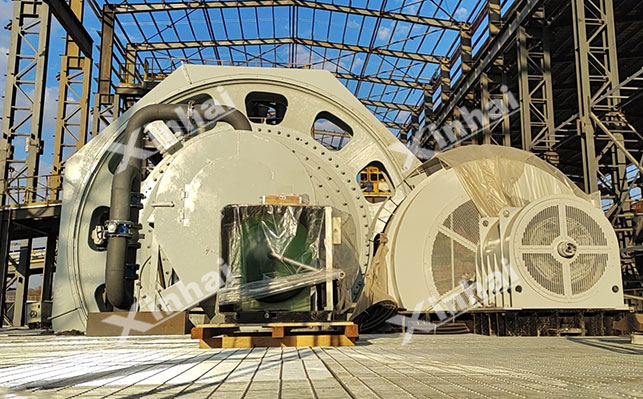
15311826613
Click to add WeChatPetalite is an important lithium-bearing mineral with a monoclinic crystal structure, typically appearing as white, gray, or colorless massive crystals. As a significant lithium resource, petalite exhibits unique physicochemical properties, demonstrating low solubility in both acidic and alkaline conditions. In nature, petalite often coexists with spodumene due to similar geological formation conditions. However, differences in crystal structure and surface properties result in lower floatability for petalite compared to spodumene, making their separation challenging. Since spodumene has better floatability, it is typically extracted via flotation first, followed by integrated processes to effectively separate the minerals, yielding spodumene concentrate and petalite concentrate. Below, we learn about the petalite flotation method.
Petalite flotation is often combined with other beneficiation methods to enhance comprehensive lithium recovery. Flotation plays a crucial role in the process, with conventional and combined flotation being the primary approaches.

Petalite’s poor floatability stems from its unique surface chemistry—lithium atoms are encased in a silicon-oxygen tetrahedral structure, hindering effective interaction with collectors. Even when using fatty acid or sulfonate collectors (similar to spodumene flotation), petalite recovery rates typically remain below 50%. Additionally, petalite shares similar surface properties with gangue minerals like quartz and feldspar, further complicating separation. Thus, conventional flotation alone often fails to meet petalite beneficiation requirements, necessitating supplementary techniques.

In view of the symbiotic characteristics of petalite and spodumene, the combined process of heavy medium beneficiation and flotation can improve the resource recovery rate. The key point of this process is to utilize the density difference between petalite and other minerals (the density of petalite (2.3-2.4g/cm³), (2.65g/cm³), feldspar (2.56-2.76g/cm³)), first enrich petalite through heavy medium beneficiation, and then flotation tailings to recover spodumene.
Before flotation, the tailings need to be ground to fully dissociate spodumene from gangue minerals. During the flotation process, fatty acid collectors and adjusters are used to adjust the pH of the slurry to 8-9 to create a suitable flotation environment. Spodumene can be floated efficiently under this condition, while petalite is mostly left in the tailings due to its poor floatability, thereby achieving the separation of the two lithium minerals.
The advantage of this combined process is that it makes full use of the difference in the physical and chemical properties of petalite and spodumene, enriches petalite in advance through heavy medium separation, reduces the processing volume of flotation operations, and improves the recovery rate of spodumene.

Optimizing grind size is critical, as overgrinding petalite increases slimes, impairing downstream processes. The ideal size (-0.15 mm, 60–70% passing) balances liberation and minimizes slimes. Rod mills are preferred for their selective grinding action.
Petalite ores often contain slimes that coat mineral surfaces, hindering collector adsorption. Desliming methods:
Hydrocyclones: Remove -0.038 mm slimes via size classification.
High-frequency screens: Separate slimes and coarse particles via vibration.
Post-treatment, slime content is reduced to <5%, improving flotation efficiency.
Collectors for petalite require strong selectivity and affinity:
Fatty acids (e.g., oleic acid): In alkaline pulp, oleate ions form metal soaps with Li/Al on petalite surfaces, enhancing hydrophobicity. However, they lack selectivity.

Sulfonates (e.g., sodium dodecyl sulfonate): Sulfonate groups electrostatically adsorb onto metal sites, while hydrocarbon chains provide hydrophobicity. Sulfonates perform better in hard water and complex ores.
Sodium carbonate (Na₂CO₃): Adjusts pulp pH to 8–9, promoting collector dissociation and reducing Ca²⁺/Mg²⁺ interference.
Sodium fluorosilicate (Na₂SiF₆): Selectively depresses quartz by forming hydrophilic fluorosilicate coatings on its surface, blocking collector adsorption.
Due to petalite’s complex mineralogy, standalone flotation is challenging. However, integration with gravity separation or other processes can yield satisfactory concentrates. The optimal hybrid approach depends on ore characteristics, necessitating bench-scale testing to tailor the flowsheet for ideal recovery.